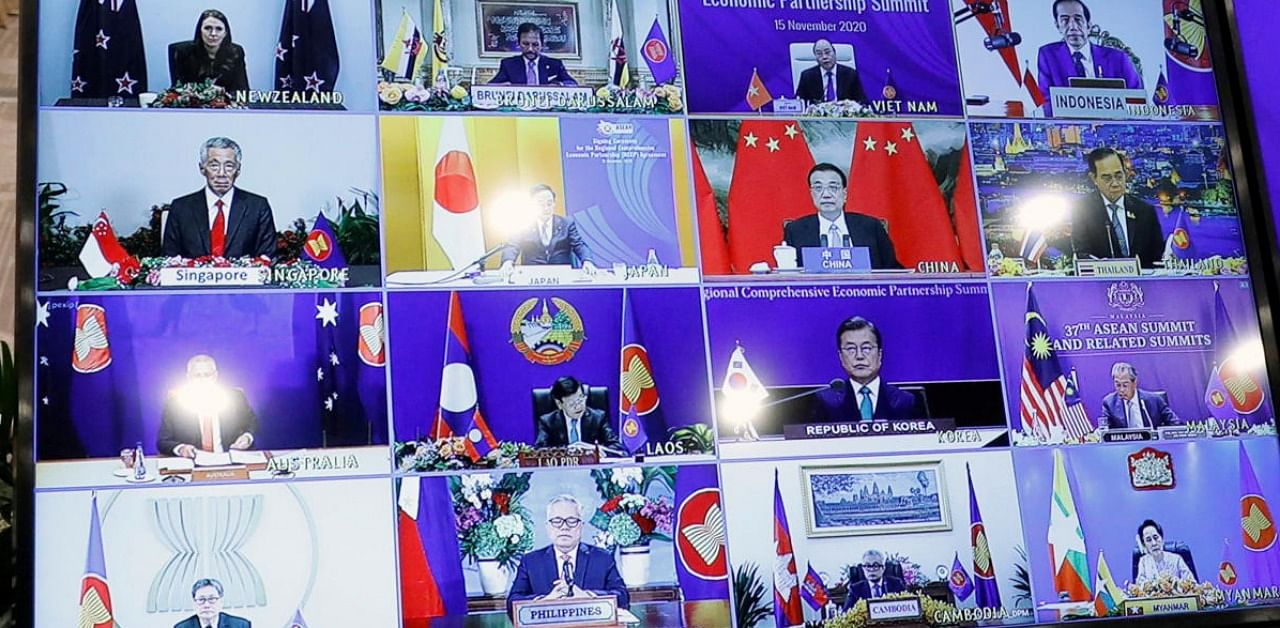
Jawaharlal Nehru’s dream of a united Asia and India’s role in it was shaken when South East Asian countries drifted towards the liberal economic system. It was the era of the Cold War, and India saw ASEAN as an American attempt to contain the Soviet Union. But the Cold War is long over, and the containment of China seems to be the objective of the West and India. The new political-economic scenario has swung the pendulum in the other direction, and India has stayed out of the Regional Comprehensive Economic Partnership (RCEP). Whether India joins in the two-year window that is still open is to be seen. It is noteworthy that RCEP became possible with the collapse of the Trans-Pacific Partnership because the US pulled out of it under President Trump.
India participated in the RCEP negotiations but opted out due to its concerns about increased imports that may affect its manufacturing, agricultural and dairy sectors. But such agreements are a two-way process. They liberalise imports and, at the same time, provide markets for exports. India realised this and has been eager to review the ASEAN-India Free Trade Agreement in goods. The need is to strengthen the competitiveness of Indian producers and manufacturers with adequate legal infrastructure. India is preparing amendments in its trade remedy laws to prevent dumping and surge in imports.
The problem with RCEP is its primary concern with reducing tariffs. The Comprehensive Partnership Agreement is comprehensive about the subject matter but limited in scope. It adopts WTO norms on many vital issues. For example, for sanitary and phytosanitary measures, it largely focuses on mechanisms for recognition and cooperation agreements and equivalence procedure, the procedure for declaring pest-free areas. For competition, it again focuses on cooperation and transparency between competition authorities. It is left to the parties to design their competition laws according to their national policies.
Investment is an important issue. But again, the agreement has limited coverage. There are some important limitations on investor protection. It has clearly defined ‘Fair and Equitable Treatment’ at the minimum standard of protection recognised in customary international law. Apart from other protections, the investment part does not have any other important provision, except expropriation and compensation. But the agreement has MFN provision, and the scope of investment provision would depend upon the bilateral investment treaties parties have with other countries. We see an effort to curtail the investor protection provision, but also a missed opportunity to include a substantial provision on obligations of investors.
In trade in services, RCEP replicates WTO provisions, with one important exception. The positive list approach for trade in services includes MFN treatment also. Under the General Agreement on Trade in Services (GATS), the positive list approach, titled ‘specific commitments’, extends only to market access and national treatment. MFN is a general obligation. In RCEP, MFN treatment is also a specific obligation.
For trade in goods, RCEP incorporates MFN treatment, only the applied rate of duty is lower than the rate committed in the RCEP schedule. Tariff schedules of China, Indonesia, Korea, Philippines and Vietnam discriminate between ASEAN countries and the five non-ASEAN countries.
The Exceptions clause is again based on Articles XX and XXI of GATT 1994, and parties missed the opportunity to make substantial provision for small and medium enterprises. National treatment violation claims cannot be made against measures taken to protect SMEs. The provision relating to corruption is also not substantial. The legitimacy of investments made by exploiting corruption in the host state should have been subjected to scrutiny.
In sum, RCEP has followed the WTO framework. On important issues associated with trade, such as environment, labour, culture and competition, it has either remained silent or has followed WTO norms. Tariff reduction is a short-term outcome of a trade deal. For a mega-deal like RCEP, it is under-performance. If the goal is to make Asia the economic centre of the world, RCEP should move further and create alternative norms on trade-related regulatory issues.
Intellectual leadership on these issues is with the West. A more comprehensive investment pact, provisions for environment, labour and competition that address the concerns of developing countries would help the WTO develop its rules and jurisprudence to reflect divergent interests. This would help build a more inclusive multilateral trade regime. More intensive work on investment was especially needed, given the ongoing negotiations on investment facilitation.
Regional trade and investment agreements and their institutions in Asia should make an effort to build norms and jurisprudence on WTO-plus issues to be able to play an effective role in the multilateral trading system of the future. The adoption of the WTO framework on basic issues was no doubt required to maintain consistency in the international regime, but mere tariff reduction is not enough to “pull the economic centre of gravity towards Asia.”
(The writer is Professor of Law, NLU, Odisha)